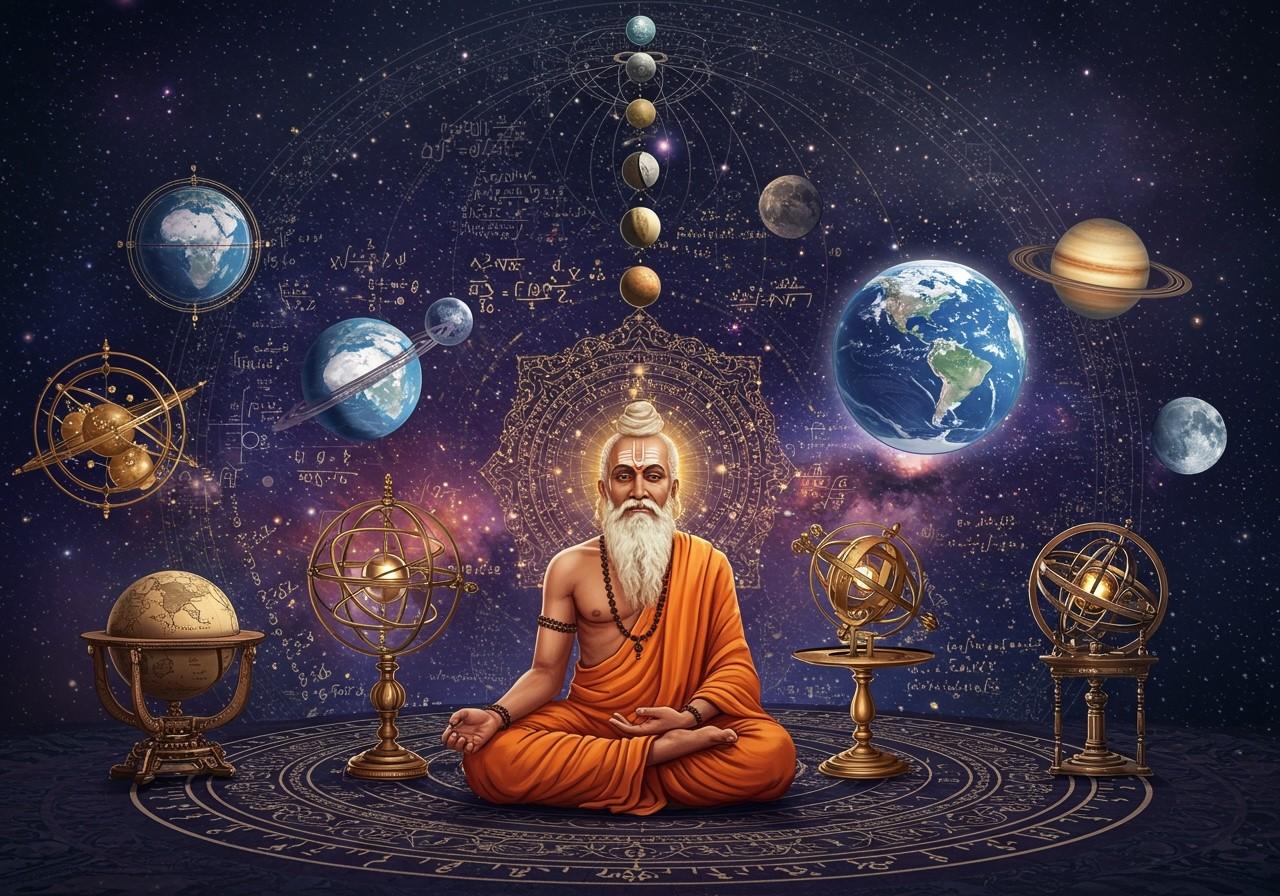
Aryabhata, born in 476 CE, was a renowned Indian mathematician and astronomer whose groundbreaking work significantly influenced these fields. His contributions laid the foundation for many modern mathematical and scientific concepts. This article explores his life, achievements, and lasting legacy.
Early Life and Education
While details about Aryabhata’s early life remain limited, it is believed he was born in Kusumapura (present-day Patna) and received his education at the prestigious Nalanda University. At the remarkably young age of 23, he composed his magnum opus, the Aryabhatiya (499 CE). This treatise, divided into four sections—Gitikapada, Ganitapada, Kalakriyapada, and Golapada—comprehensively covers various aspects of mathematics and astronomy.
Revolutionary Mathematical Contributions
Aryabhata’s mathematical contributions were truly revolutionary for his time. He:
- Calculated an remarkably accurate approximation of π (pi) as 3.1416, a value astonishingly close to the modern value. This approximation was crucial for various calculations, including those related to circles and spheres.
- Introduced the concept of zero as both a numerical value and a placeholder, a fundamental concept in modern mathematics and the decimal system. This was a groundbreaking innovation that revolutionized numerical representation and calculations.
- Developed the decimal system, the foundation of modern numerical notation and arithmetic operations. This system enabled more efficient and accurate calculations compared to previous numerical systems.
- Devised algorithms for solving linear and quadratic equations, providing systematic methods for finding solutions to these mathematical problems. These algorithms are still relevant today and form the basis of many computational techniques.
- Presented methods for computing square and cube roots, enabling more complex mathematical operations and problem-solving. These methods facilitated advancements in various fields, including geometry and algebra.
- Defined the sine function, which he called ‘ardha-jya’, a crucial concept in trigonometry. His work in trigonometry laid the groundwork for further developments in this field and its applications in astronomy and other areas.
Groundbreaking Astronomical Discoveries
Aryabhata’s astronomical insights were equally transformative. He:
- Proposed that the Earth rotates on its axis, a concept far ahead of his time, explaining the apparent motion of celestial bodies. This challenged the prevailing geocentric view and paved the way for a more accurate understanding of the solar system.
- Calculated the length of the solar year with remarkable precision (365.3586805 days), a value very close to the modern measurement. This precise calculation was essential for developing accurate calendars and astronomical models.
- Suggested a heliocentric model, placing the Sun at the center of the solar system with planets revolving around it in elliptical orbits. This was a radical departure from the then-accepted geocentric model and anticipated later developments in astronomy.
- Provided a scientific explanation for lunar and solar eclipses, attributing them to the shadows cast by the Earth and the Moon, respectively. This dispelled superstitious beliefs and demonstrated the power of scientific observation and reasoning.
- Advanced the understanding of planetary positions and movements, laying the groundwork for future astronomical models. His work enabled more accurate predictions of planetary positions and contributed to the development of more sophisticated astronomical theories.
Lasting Legacy and Influence
Aryabhata’s work had a profound and far-reaching impact on subsequent scholars in India and beyond. His theories were studied, referenced, and expanded upon by later Indian mathematicians and astronomers, including Brahmagupta and Bhaskara I. Translations of the Aryabhatiya into Arabic and Latin disseminated his knowledge to the Islamic and European worlds, influencing scholars like Al-Khwarizmi. His legacy continues to inspire, with institutions and even India’s first satellite named in his honor.
Poojn.in: Connecting You to India’s Scientific Heritage
At Poojn.in, we celebrate India’s rich scientific and cultural heritage. Explore our collection of products that connect you with these traditions:
- Authentic Puja Items: Enhance your puja room or study with traditional items, sacred seeds, and more, honoring the spirit of learning and discovery.
- Sacred Geometry Tools: Explore the beauty and symbolism of sacred geometry with our collection of colored threads and other ritualistic items crafted from copper and brass.
- Ritual Items for Academic Success: Create a conducive learning environment with blessed items and yantra sets designed to enhance focus and concentration.
Visit Poojn.in to discover more and connect with India’s rich intellectual legacy.
FAQs: Exploring Aryabhata’s Contributions
What were Aryabhata’s key discoveries? Aryabhata’s key discoveries include the approximation of pi (π), the concept of zero, and the place-value system.
What are his main achievements in mathematics? His major mathematical achievements include introducing the concept of zero, developing the place-value system, approximating pi, and devising algorithms for solving equations.
How did he contribute to astronomy? Aryabhata revolutionized astronomy by proposing the Earth’s rotation, explaining eclipses, and calculating the solar year with remarkable accuracy.
What is his most famous work? The Aryabhatiya, a comprehensive treatise on mathematics and astronomy, is his most celebrated work.
Why is he considered a pioneer? Aryabhata is a pioneer for his groundbreaking concepts like zero and the place-value system in mathematics, along with his advanced astronomical theories, including the Earth’s rotation.
How did his work influence others? His work laid the groundwork for later mathematicians and astronomers in India and beyond, influencing the development of these fields for centuries.
Conclusion
Aryabhata’s remarkable achievements continue to resonate in the modern world. His contributions to mathematics and astronomy were not only groundbreaking for his time but also laid the foundation for many scientific advancements that followed. His legacy serves as a testament to the power of human curiosity and intellectual pursuit.


